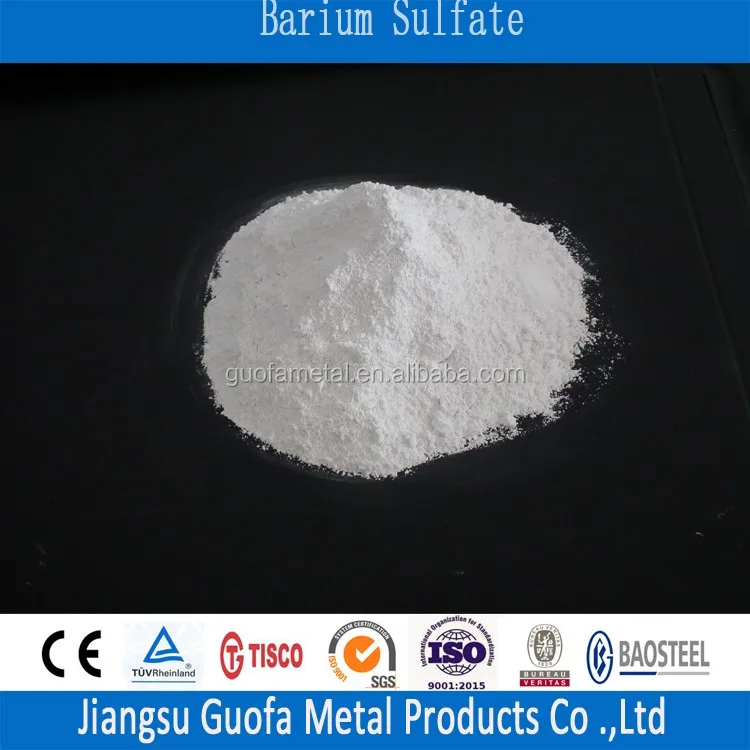

Because it is insoluble in water we know that it is the precipitate. BaCl 2 + K 2 SO 4 BaSO 4 + 2 KCl By examining the solubility rules we see that, while most sulfates are soluble, barium sulfate is not. We would expect them to undergo a double displacement reaction with each other. The presence of both the large sized ions in barium sulphate leads to a higher lattice energy than the hydration enthalpy making the salt less soluble and easy to precipitate. It is a white crystalline solid that is odorless and insoluble in water. Barium chloride and potassium sulfate are both ionic compounds. Smaller ions tend to have hydration enthalpy that excess lattice energy making the ionic solids more soluble. Solubility is determined by both lattice energy as well as hydration enthalpy.
#Barium sulfate precipitate color free
The precipitate of barium sulphate is white in colour as the salt does not release any free electrons that undergo transitions in the visible energy range. Both the barium as well as sulphate ions are large in size and therefore less soluble in water. The precipitation observed in the case of barium sulphate is a consequence of its low solubility. The sodium chloride formed in the product is highly soluble and remains dissolved in the solution while the barium sulphate precipitates out as a white solid. The barium ion gets attracted to sulphate ions leaving behind chloride ions that form bonds with the free sodium ions. The balanced chemical equation for this double replacement reaction looks like this. Barium sulfate is insoluble in water and will precipitate out of solution. The reaction between barium chloride and sodium sulphate is an example of a double displacement reaction where the anions and cations get interchanged giving rise to two new salts. Barium nitrate, Ba(NO3)2, will react with sulfuric acid, H2SO4, to produce barium sulfate, BaSO4, and aqueous nitric acid, HNO3. Coloured salts are mainly formed by the transition metal ions that can show variable oxidation states and their electrons show d-d transition. Barium is an alkaline earth metal with a valency. As all of the other substances are soluble in water we can rewrite the equation.Hint: Barium sulphate is an ionic compound consisting of barium and sulphate ions. We would expect them to undergo a double displacement reaction with each other.īy examining the solubility rules we see that, while most sulfates are soluble, barium sulfate is not.

Write the reaction and identify the precipitate.īarium chloride and potassium sulfate are both ionic compounds. The exceptions are the alkali metals and the ammonium ion.ĬaSO 4 and Ag 2SO 4 are slightly soluble.Ī solution of barium chloride is mixed with a solution of potassium sulfate and a precipitate forms. When a barium chloride solution reacts with sulphuric acid, a white precipitate of barium sulfate is formed. Carbonates (CO 3 -2), phosphates (PO 4 -3) and sulfides (S -2) are insoluble. The formation of a precipitate can be caused by a chemical reaction. The exceptions are those containing Ag +, Hg +2, and Pb +2.Ħ. Most chlorides (Cl -), bromides (Br -) or iodides (I -) are soluble. Sulfate ions can be detected using a solution of barium chloride that produces a white precipitate of barium sulfate that is insoluble in dilute hydrochloric. The exceptions are the alkali metal hydroxides and Ba(OH) 2.ĥ. Nitrates (NO 3 -), chlorates (ClO 3 -), and perchlorates (ClO 4 -) are soluble. Ammonium (NH 4 +) compounds are soluble.ģ. Alkali metal (Group IA) compounds are soluble.Ģ. Solubility Rules and Identifying a Precipitateġ.


 0 kommentar(er)
0 kommentar(er)
